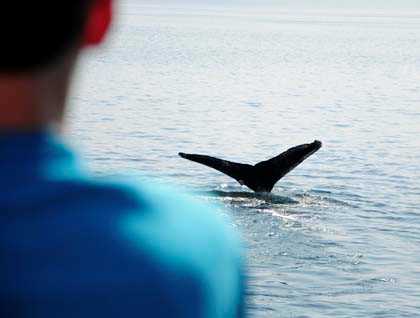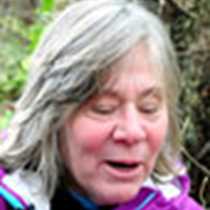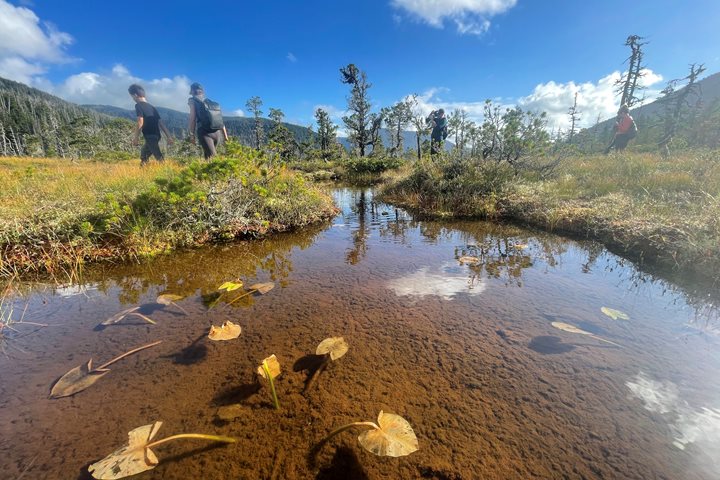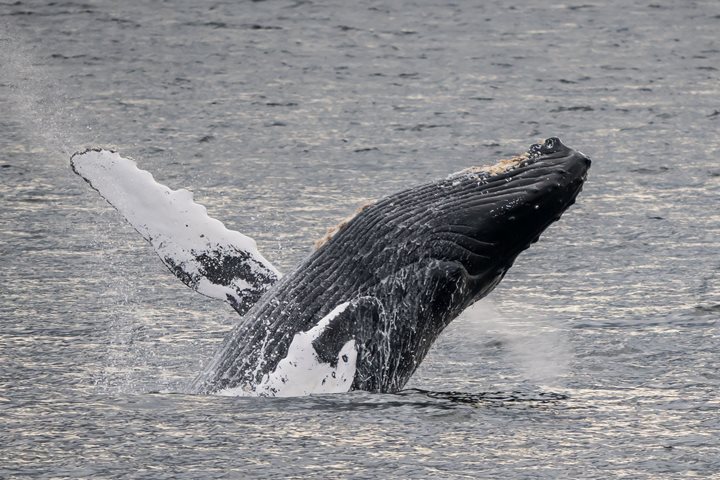Jen’s soft announcement of “bear on the shore” awakened us to a pre-coffee, pajama-clad, camera- toting quest to reach the bow for a great view of a coastal brown bear making its way along the grassy beach. The National Geographic Sea Bird had tucked into Red Bluff Bay, an extraordinary steep and narrow fjord carved deeply into the southern part of rugged Baranof Island. Where the glacier once dropped ice into the bay, we watched salmon leaping and making their way toward their spawning beds at the head of the inlet. Nearby a foaming white waterfall poured into the dark green ocean water—what a grand beginning to this glorious day!
As the sun burned the clouds away we cruised northward along the eastern edge of the island and soon met up with Dr. Andy Szabo, director of the Alaska Whale Foundation. Dr. Szabo’s knowledge of the foraging behavior of Southeast Alaska’s humpback whales is unsurpassed and his presentation style is delightfully entertaining. Perhaps the whales enjoyed it too, as right after Andy departed, five humpback whales were in our vicinity. The sound of whale breath and close views of these resting cetaceans brought the morning to a most satisfying end.
Kayaking in Hanus Bay and hiking the Lake Eva trail through old growth forest on a sunny afternoon was outstanding. Right now, there are hundreds, perhaps thousands of Pacific salmon in the lake and outlet stream system. We watched as these amazing fish worked their way up the shallow stream and over the cascades to spawn in the gravels and then die; leaving their ocean accumulated biomass to feed the next generation of fish as well as the bears, eagles, and surrounding forest. In my book, salmon are heroic.







